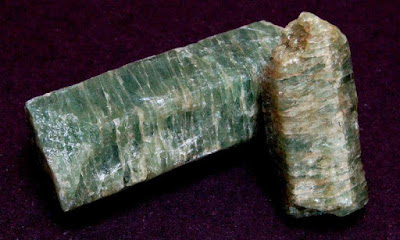
Apatite has recently gained considerable attention as a mineral with many uses within the Earth and planetary sciences. Apatite chemistry has recently given new insight into a wide range of geological processes and tools, such as magmatism, metasomatism, planetary geochemistry, and geochronology. In their open-access Geology article, Emilie Bruand and colleagues expand the utility of apatite by presenting a novel way to fingerprint magma chemistry and petrogenesis using apatite inclusions within robust titanite and zircon.
Bruand and colleagues present trace element data from apatite mineral inclusions shielded within magmatic zircon and titanite. Importantly, apatite inclusion and host titanite chemistries detailed in this study allow estimation of the whole-rock Sr and SiO2. They show how these data can be used to assess the degree of fractionation of the host magma and to calculate key trace element abundances and ratios. They also demonstrate that the inclusions can be linked to discrete periods in the crystallization history of the host phases, thus providing insight into petrogenesis.
These results highlight the fact that apatite compositions might discriminate modern granitoids (younger than 2.5 Ga) from Archean-Proterozoic transitional granitoid compositions (sanukitoid signatures). Development of such a petrological tool has important potential for interpretation of provenance and a better understanding of the secular evolution of the continental crust, including that of early Earth.
Reference:
An apatite for progress: Inclusions in zircon and titanite constrain petrogenesis and provenance
Emilie Bruand et al., School of Earth and Environmental Sciences, University of Portsmouth, Burnaby Building, Burnaby Road, Portsmouth PO1 3QL, UK. This paper is OPEN ACCESS online at DOI: 10.1130/G37301.1
Note: The above post is reprinted from materials provided by Geological Society of America.










